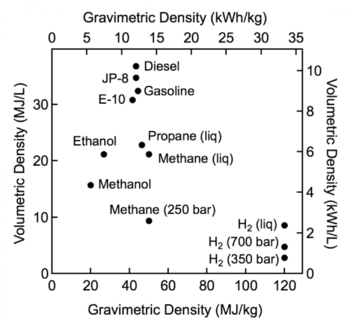Energy storage
- See also: Nuclear_power_reconsidered
This article is a brief summary of the technologies relevant to the large-scale energy storage[1] needed for wind and solar and other intermittent energy sources.
Pumped hydro
The most widely used utilities, where available.
Thermal
Molten salt is a very efficient way to store energy in concentrated solar power (CSP) systems[2], where adding some well-insulated storage tanks does not significantly increase the thermal losses.
Batteries
Still too expensive for utility-scale systems.
Hydrogen

Hydrogen energy storage may become an important competitor to pumped hydro and thermal, if high-temperature nuclear reactors become available. The readily available high-temperature heat from these reactors will offset the inefficiency of generating the hydrogen from water.
Other
Although not storing energy to be used for generating electricity, high-temperature reactors can perform the equivalent of energy storage by using excess available energy to power processes that don't care if the energy is intermittent, like the production of steel, cement, and fertilizer. This "process heat" is a big part of our total energy consumption, and can be timed to take advantage of periods when the intermittent sources are at full power.